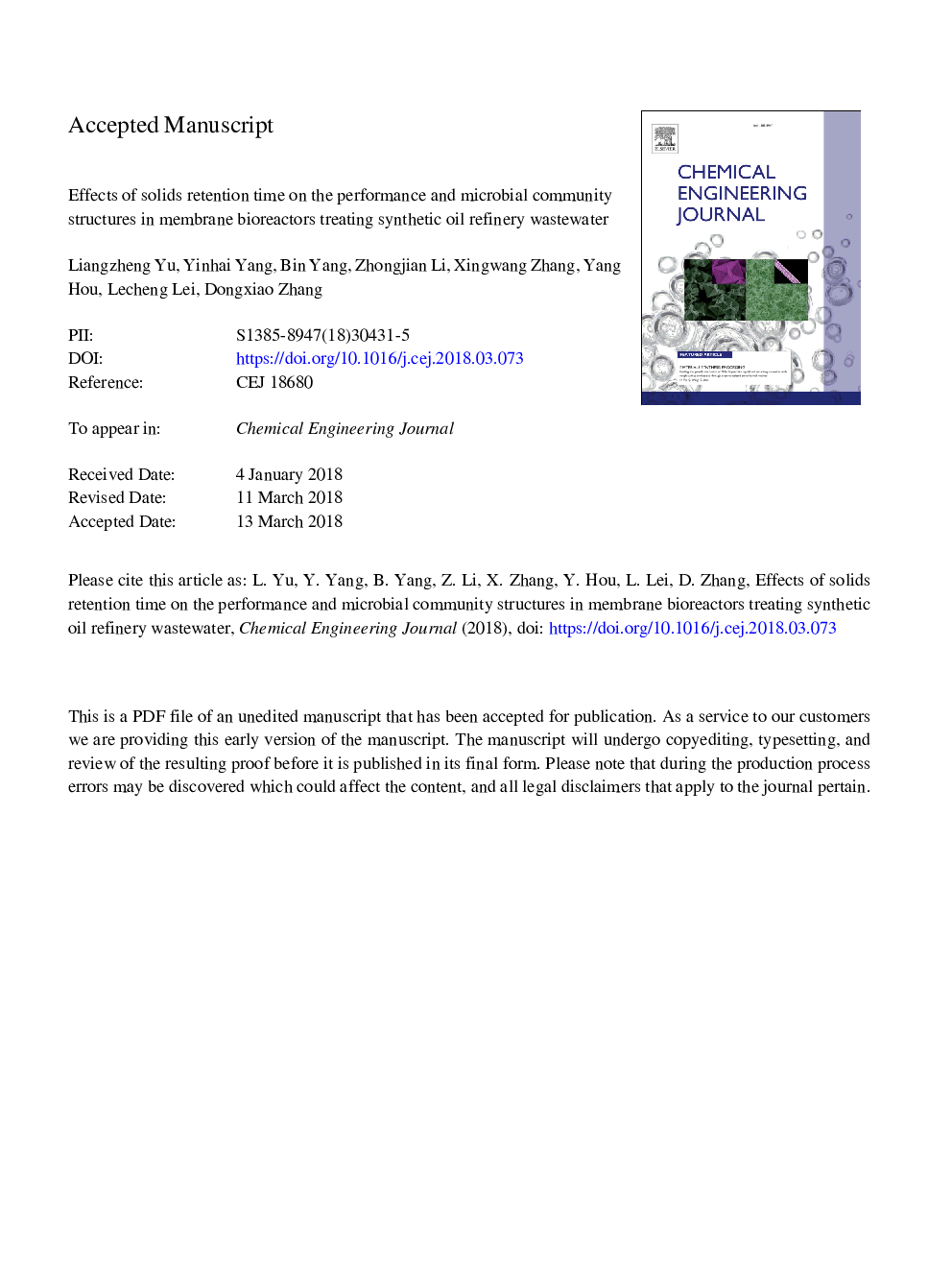| Article ID | Journal | Published Year | Pages | File Type |
|---|---|---|---|---|
| 6579552 | Chemical Engineering Journal | 2018 | 21 Pages |
Abstract
The treatment of oil refinery wastewater has attracted a significant attention for containing hazardous pollutants and causing adverse impacts on the environment. Three submerged membrane bioreactors (MBRs) treating synthetic oil refinery wastewater containing aromatic hydrocarbons including toluene and anthracene were operated at the different solids retention times (SRT) (10, 30 and 60â¯days) to investigate pollutants removals and membrane fouling characteristics. Mycobacterium and Sphingomonas capable of degrading aromatic compounds found in MBRs may contribute to high removal efficiencies (>99%) of aromatic hydrocarbons at three SRTs. It is observed that nitrifying bacteria at short SRT of 10â¯days was in low abundance, and the resulting removal efficiency of NH4+-N was only 79%, which is much lower than those in MBRs at the SRTs of 30 and 60â¯days (>97%). Severe membrane fouling and the minimal membrane fouling was observed at the SRT of 10 and 30â¯days respectively. Additionally, the investigation of loosely bound extracellular polymeric substances (LB-EPS) content including the protein and polysaccharide induced by SRT indicated that high LB-EPS concentration at the SRT of 10â¯days caused severe membrane fouling. The relative abundances of the biofilm-forming bacteria Deinococcus and the bulking and foaming bacteria Caldilineaceae found in three MBRs correlated well with membrane fouling rate.
Related Topics
Physical Sciences and Engineering
Chemical Engineering
Chemical Engineering (General)
Authors
Liangzheng Yu, Yinhai Yang, Bin Yang, Zhongjian Li, Xingwang Zhang, Yang Hou, Lecheng Lei, Dongxiao Zhang,
